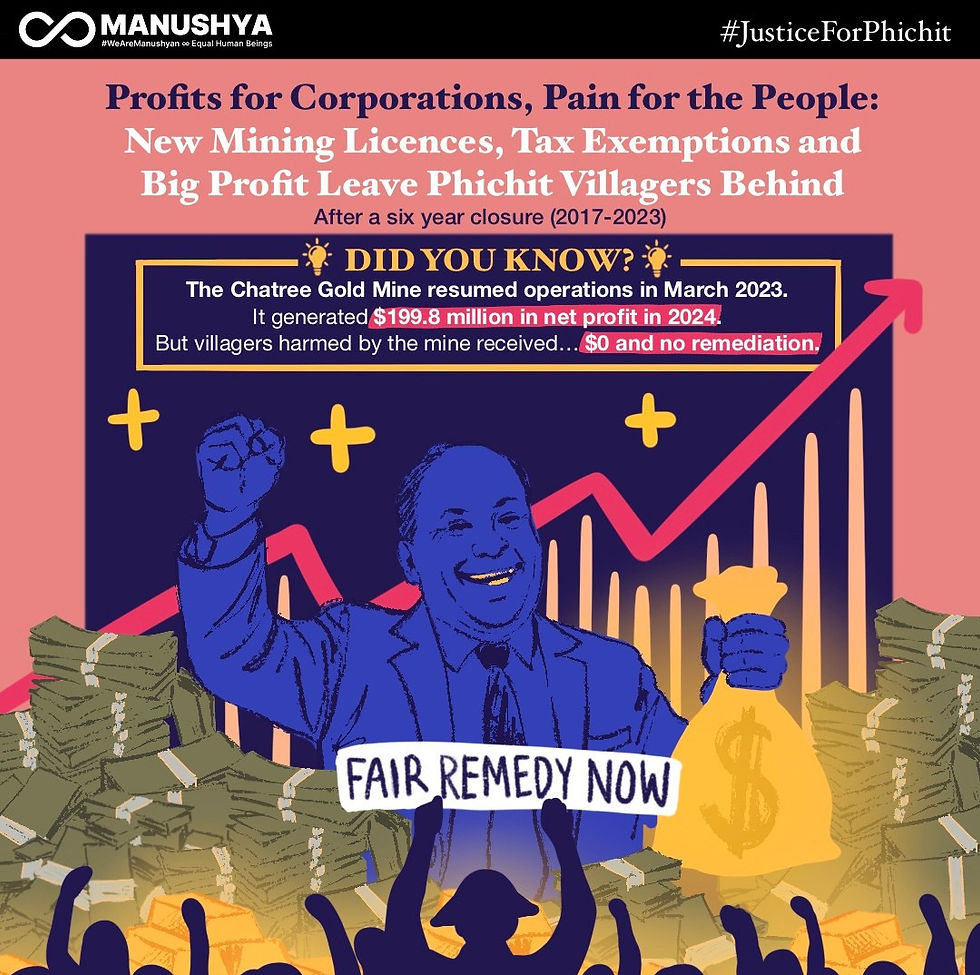Today marks International Day against Child Labor!
- Manushya Foundation

- Jun 12, 2023
- 2 min read

Today marks International Day against Child Labor!
Why is this day so important?
This day is about supporting children who are forced into labor, oftentimes due to situations where families face economic hardship or uncertainties. In Southeast Asia, the exploitation of children is particularly concerning as child labour remains a significant challenge.
Children are driven into work for various reasons that are mostly rooted in financial challenges. Shedding light into the causes, poverty, sudden illness of a caregiver, job loss of a primary wage earner, financial uncertainty may lead them to work to support their families. Breaking the cycle of poverty is crucial in addressing child labour.
Child labor has tragic consequences that cannot be overlooked. They can range from dropping out from school, to physical and psychological harm. Additionally, child laborers are often subjected to long work hours, low wages, and dangerous working conditions that rob them of their childhood and future prospects.
Sadly, many child laborers in South East Asia are victims of trafficking, are forced into slavery and sexual exploitation which sometimes lead to their death [1].
Here are some important data ⤵️
📌 In the world, 1 in 10 children are engaged in labor [1]. In the poorest countries, 1 in 5 children are engaged in labor [2].
🌏The Asia-Pacific region has the highest number of working children worldwide, with an estimated 122 million children aged 5-14 years engaged in labor[3].
🌾Sectors such as agriculture, manufacturing, mining, and domestic work are most notorious for employing child laborers in South East Asia.
🏫Lack of access to quality education perpetuates child labour. When children are denied education, they are more vulnerable to exploitation. Investing in education and creating supportive learning environments is essential for combating child labour effectively.
❗Despite being widely discredited, several large multinational businesses, such as Philip Morris[4], and H&M, still employ children[5], and governments do not take sufficient measures to ensure that children are protected from labor , especially in dangerous sectors like mining, production of chemical substance.
How can you help?
Spread awareness: Share this post and educate your friends and family about the issue of child labor. Use your voice to call for change!
Advocate for Change: Engage with policymakers and government representatives, urging them to implement and enforce laws that protect children from exploitation and promote their rights to education and a safe childhood.
#WeAreManushyan ∞ Equal Human Beings
✊ Manushya stands in solidarity with children forced into labor. Let's stand united and together against child labor and work towards a world where every child can enjoy their childhood, dream big, and build a bright future. Join us in this important cause!
References:
[1]. UNICEF, Child labour, available at: https://www.unicef.org/protection/child-labour
[2]. UNICEF, “In the world’s poorest countries, slightly more than 1 in 5 children are engaged in child labour”, (May 2022), available at:
[3]. ILO, “Child labour in Asia and the Pacific”, available at: https://www.ilo.org/ipec/Regionsandcountries/Asia/lang--en/index.htm
[4]. Independent, “Tobacco giant Philip Morris sold cigarettes made using child labour”, (15 July 2010), available at:
[5]. Forbes, “How Businesses Can Stop Child Labor In Their Supply Chains”, (25 Augst 2021), available at:
“10 Companies that Still Use Child Labour”, (27 February 2019), available at: https://www.careeraddict.com/10-companies-that-still-use-child-labor
.png)








Comments